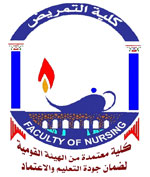ABSTRACT:
Background: Contemporary learning environments have fewer structured learning activities and more self-directed learning tasks guided through consultation with academics. Such tasks are predominately projects problem-based where the student is required to follow a freely guided road map to self-discovery while simultaneously achieving the desired learning outcomes for a particular course. However, many students struggle to adjust to a learning environment where they are being increasingly encouraged to undertake Self-Directed Learning (SDL). Aim of the Study: is to determine nursing students' readiness for self-directed learning at Faculty of Nursing – Assiut University Subject and method: A descriptive explorative research design was utilized. The study sample constituted of 520 students enrolled in the second, third, and fourth academic year (2010-2011) at Faculty of Nursing-Assiut University. Tool of the study: Each student was submitted to Self-directed learning readiness scale. It consisted of 41 items divided into three factors: 13 items covered self-management(SM); 13 items covered desire for learning (DL); and 15 covered characteristics of self-control factor (SC). The possible responses of this part were five point Likert Scale: Strongly disagree scored (1), disagree scored (2), not decided scored (3), agree scored (4) , and strongly agree scored (5). Results: shows that all of the study subjects agreed about factors of self-directed learning readiness and there were highly statistically significant differences for all of them (**P≤ 0.001). The mean scores of self management and desire for learning factors were significantly highest among the third year students in comparison to other academic years; characteristics of self-control factor was highest among fourth year students. While, mean scores of self directed learning readiness were lowest among second year students as regard to all factors of self directed learning readiness. Conclusion and recommendations: On top of this results the researcher suggesting of applying this scale will promote an educational climate that will foster adult learning principles, gradually promoting student autonomy and mutual responsibility for learning in a non-threatening environment and, hence, a reduction in student anxiety.
Research Department
Research Journal
Assiut Medical Journal
Research Member
Research Publisher
Assiut Medical Journal
Research Rank
2
Research Vol
Vol. 35 No. 2
Research Year
2011
Research_Pages
305-317
Research Abstract

